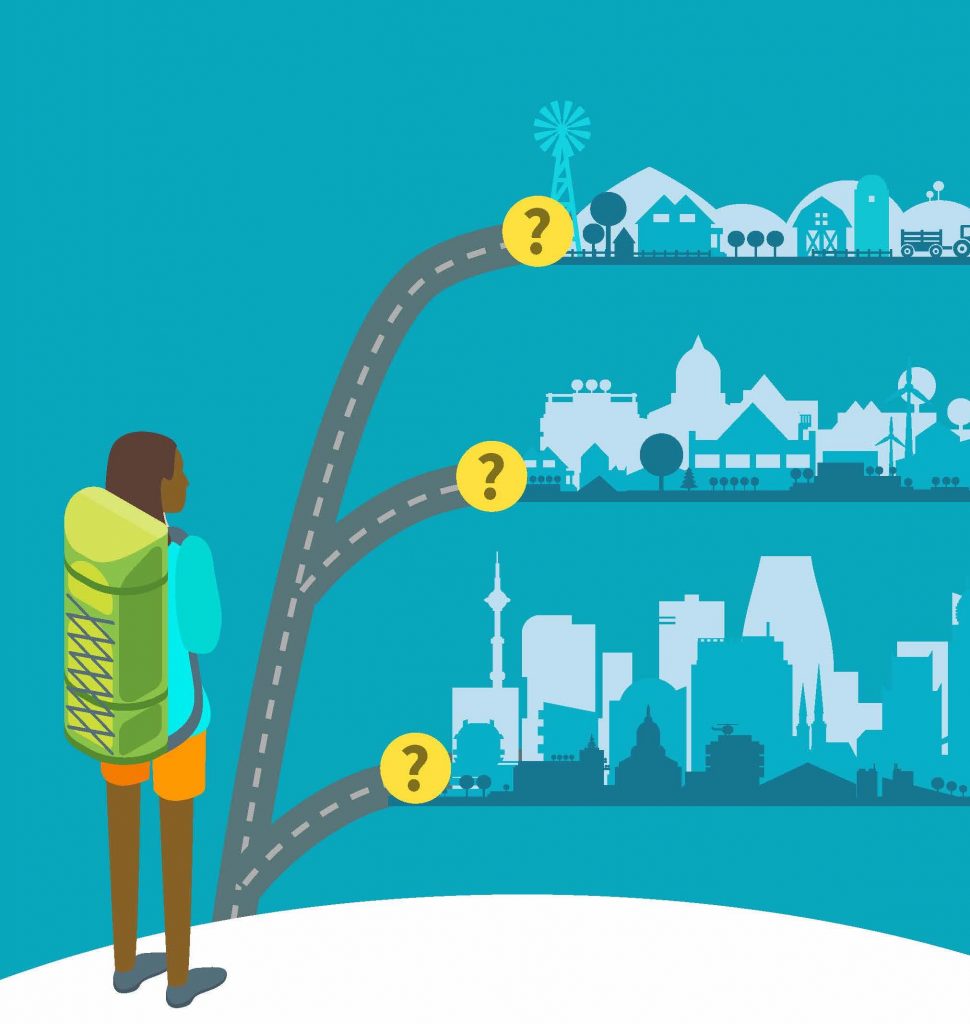A new IPL algorithm for refugee resettlement gives refugees a say in the process while also assuring host countries that they can successfully integrate.
IPL researchers have added a new algorithm to our set of tools for immigrants, refugees, and the countries receiving them. Like the earlier version, it uncovers synergies between people and places, using historical data to assign refugees to resettlement locations where they’re most likely to thrive. But this approach also incorporates refugees’ preferences, prioritizing places they’ve designated as top choices—places that also give them the best chance of meeting their host country’s goals for successful integration.
Here, researchers Jens Hainmueller and Kirk Bansak discuss the inspiration behind their work.
Q: Many governments are supporting high numbers of refugees and asylum seekers, so giving newcomers a say in where they are placed could strike them as yet another logistical challenge. Why is it important or desirable to incorporate refugees’ preferences into the resettlement process?
Kirk: First, there’s a normative reason. Generally, we like to allow people to do what they want, where it’s possible. In many countries, governments and citizens alike tend to care about agency and freedom of choice.
Then, there’s a practical reason: Refugees may have useful information, reflected by their preferences, that would indicate where they’re likely to do better. And when they do well, that’s also a benefit for their host communities.
Another key motivation for governments is that, if you send people to a place where they don’t want to be, they’re probably going to move. So it may not be the best investment of resources to arrange transport, help set up a residence, and establish a support system for an incoming family who ultimately will go somewhere else.

Q: How would refugees form their preferences in a meaningful way? Do they rely on word of mouth, formal information channels, or something else?
Kirk: That’s an open question. It isn’t well known whether refugees have informed preferences regarding where to go, or even if they know what the different locations are like within their destination country. They might not prioritize things like employment, as the host countries might; they could care more about social networks, the weather, or anything else.
Jens: There might not actually be a big trade-off between refugees’ employment outcomes and their preferences, if it turns out that people naturally want to go to places the data say are a good fit for them. But to an economist, it isn’t necessary to know exactly what shapes their preferences. An economist would say that the individual knows what’s best for himself, and that’s the best guide we have.
Q: So we’re thinking of resettlement as a kind of market, with the refugee as a consumer?
Jens: Yes. At the most basic level, market design studies the creation of markets that allocate scarce resources in an efficient, mutually beneficial way. So rather than try to change people’s individual choices, you figure out how to design a market that solves an allocation problem in a way that gives people the maximum utility possible.
Q: As people around the world look for ways to give refugees greater agency in this process, how can they help host country governments think through the challenges involved?
Jens: For people directly managing the resettlement process, the idea of incorporating refugees’ preferences seems quite complicated. People worry about giving refugees the false expectation that they’ll always be able to go to their top choice.
Kirk: It would be expensive, as well, to collect all that information. And then there’s the possibility of political backlash.
Jens: It could open a Pandora’s box of complex political conflicts. For example, people might argue that it should be a two-way match process, with locations allowed to pick and choose which refugees to receive. That could devolve into endless negotiations over which locations will take the cases deemed “undesirable.”
Q: Given these difficulties, how did you think realistically about developing a tool governments could accept and implement? How did you balance refugee agency, on the one hand, and governments’ limited capacities, on the other?
Jens: Well, if it’s done the right way, incorporating preferences can be a practical next step. Initially, we were very skeptical that you could match refugees to places based purely on preferences. When we talked to policymakers, they thought this was not the right way to approach the problem. They asked us to make the allocation process more conducive to refugee integration, but without making it more complicated. That led us to develop outcome-based matching.
Once we had that tool developed, we wondered whether we could improve the system by incorporating preferences, because it doesn’t capture any information refugees might have about what’s best for them. Imagine that a refugee knows a certain place very well, or has friends there who could help him find a job. That would be useful information to harness to make an even better allocation.
Q: So basically, there might be synergies between person and place that the algorithm can’t see, because they aren’t in the data?
Jens: Yes. And also, the synergy might not even manifest itself in the outcome the system is designed to optimize. You might have a 15 percent chance of finding work in ten different places, but maybe one place of those ten would make you much happier, for reasons the data doesn’t capture.
For example, a gay or lesbian refugee might care more about being in a place with a large, supportive LGBTQ community, and that community support could lead to better outcomes.
So we tried to strike a compromise: respect peoples’ preferences, because it’s normatively appealing and might provide information that leads to a better match, while at the same time ensuring a minimum level of integration success, which is foremost on the mind of governments.
Q: How does an algorithm allow you to achieve this compromise?
Jens: One benefit of an algorithm is its flexibility. Say a government wants to achieve at least a 25 percent employment rate among refugees. Once it has achieved that goal, it is happy to let people go where they think is best for them, and the algorithm can do both. If you think of the options ranging from purely outcome-based allocation to purely preferences-based allocation, our “middle ground” approach allows governments to choose where they want to fall on that spectrum.
Q: This “middle ground” approach also seems like a boon for refugees. If someone designates destinations as top choices that would actually be a bad fit, the system protects them by setting a minimum level of desired integration outcomes, right?
Jens: Yes. And there are certain criteria that a mechanism like this must meet to actually work. Ours is specifically designed to meet those criteria.
Kirk: Two criteria that are key, from both an academic and a practical perspective, are “strategy-proofness” and “pareto efficiency.”
A strategy-proof mechanism is one in which no one can game the system by mis-reporting preferences. Pareto efficiency means that, once allocations have been made, any swap would leave at least one person worse off. Our algorithm meets both of these criteria, while still working within the capacity constraints of a country’s resettlement system.
Q: As we increasingly see algorithms advanced as solutions for social problems, there are concerns that this approach could have unintended consequences. How can algorithms be deployed for social good in a way that is responsible and ethical?
Kirk: That’s one of the nice things about bringing the market design perspective into this, especially since it takes the desires of the people most directly affected as one of the inputs.
Jens: And a careful pilot-testing process lets us do the gold standard of research and evaluation, as we now are doing in projects around the world. We very carefully roll it out, monitor, and improve it over time.
Kirk: There’s an infinite number of ways to combine the dual goals of respecting refugees’ agency and promoting governments’ priorities for integration. We wanted to avoid design decisions that would combine those goals in an arbitrary manner, and we wanted to make sure that important principles like strategy-proofness were respected. Our approach offers what we hope is an ethical, principled way to bring these two important goals together.
To learn more, read their working paper here.







